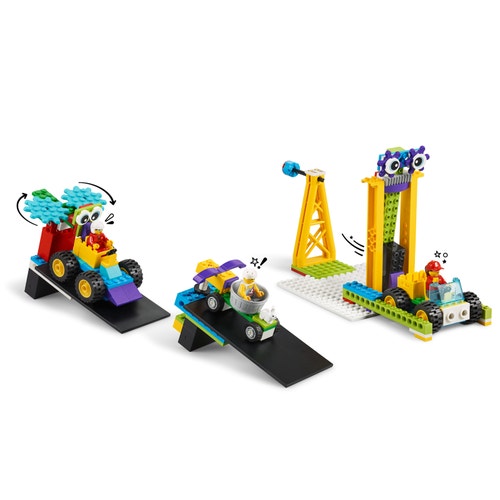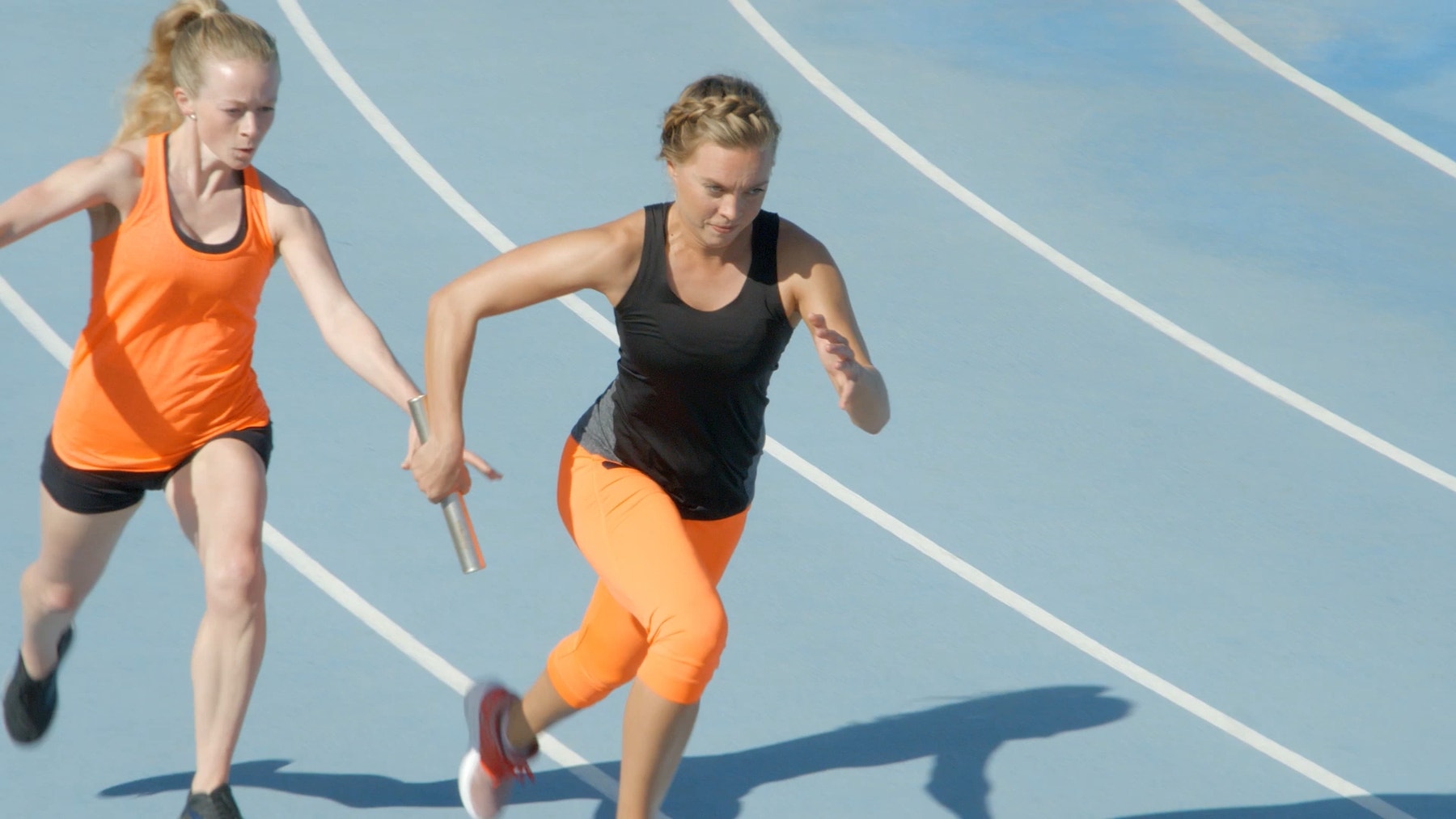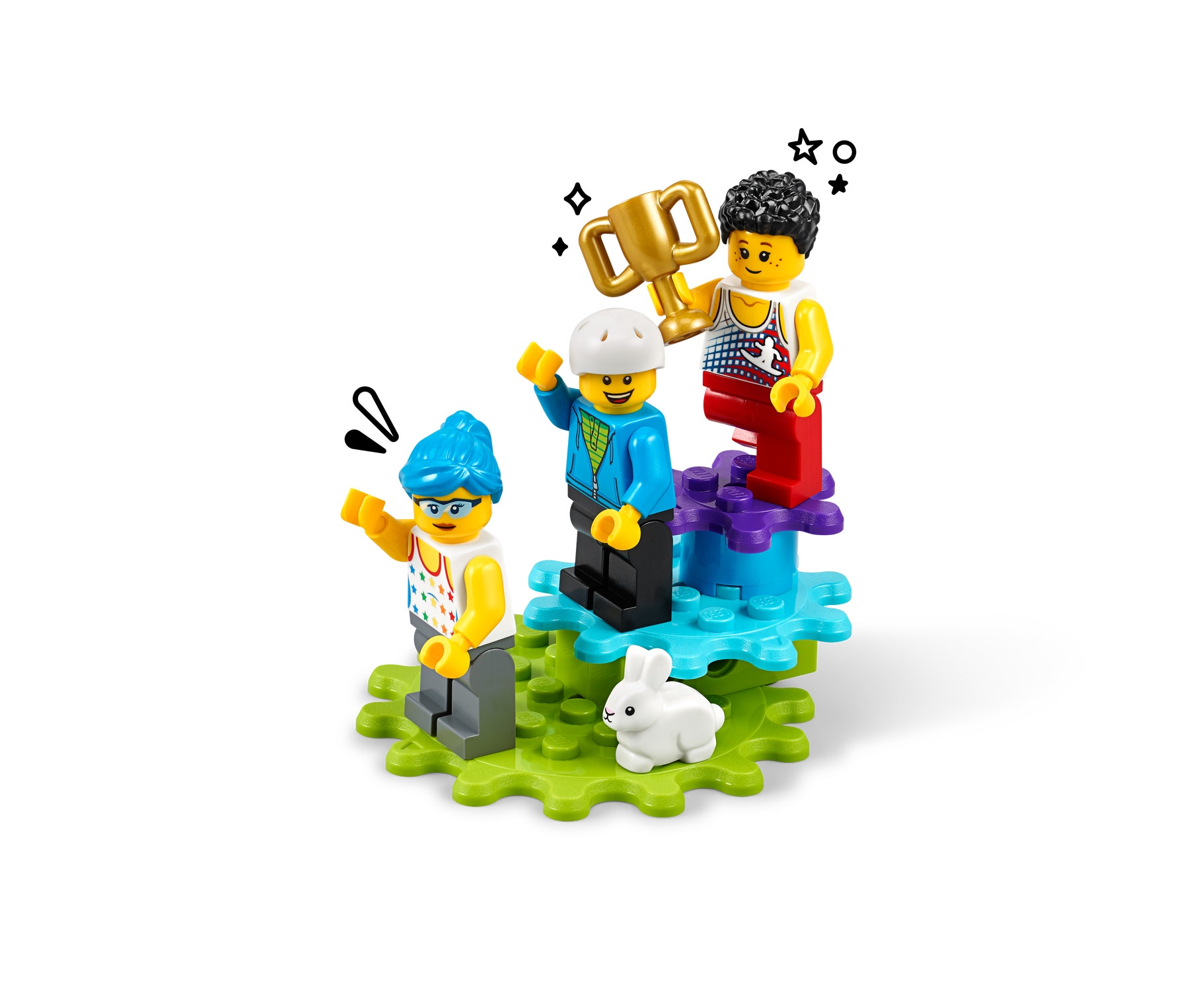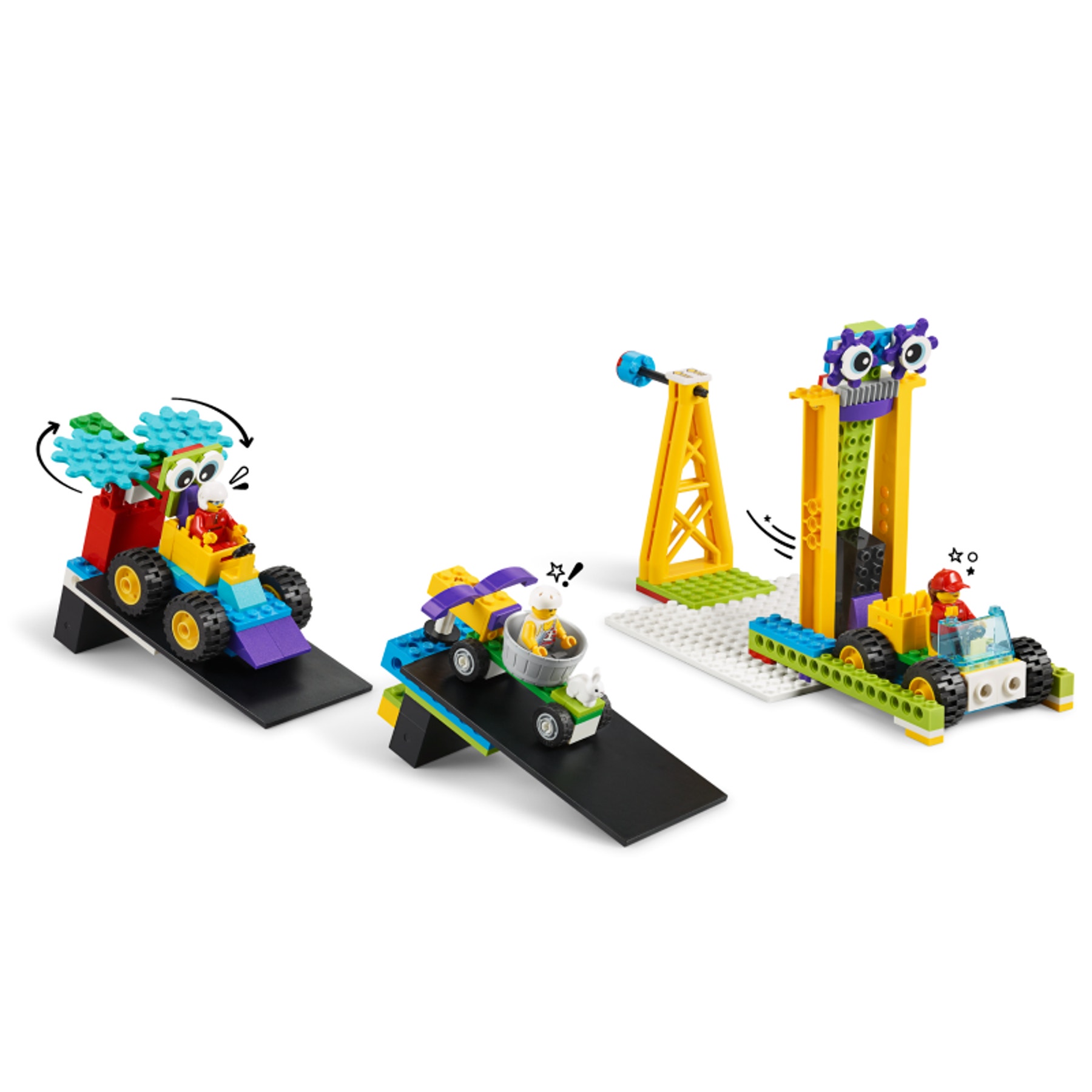Relay Race
Design, build and test mechanisms that can pass objects to a teammate, creating a fun and exciting relay race!

Prepare
- Review the online pupil material. Use a projector to share this material with your pupils during the lesson.
- Make sure that you have covered the concepts of pushes, pulls, and gravity in an earlier lesson.
- Consider the abilities and backgrounds of all your pupils. Differentiate the lesson to make it accessible to everyone. See the Differentiation section below for suggestions.
Part A (45 Minutes)
Engage
(Whole Class, 10 Minutes)
- Watch the pupil video here or access it via the online pupil material.

- Facilitate a discussion about what the pupils have learned about push and pull forces.
- Ask questions like these:
- What models do you remember building?
- Which ones worked best for you?
- Would you like to build any of them again?
- If the pupils need a little guidance, help them by asking:
- How can you use what You have learned about push and pull forces to make a relay race for the class?
- How can you move an object without touching it with your hands?
- What ideas do you have for a relay race?
- Tell the pupils that they’re going to use what they have already learned about push and pull forces to make a relay race for the class. Introduce the activity:
- Tell the pupils to choose an object to be used as the ‘baton’ that is passed. This could be, for example, a LEGO® pizza element or a crumpled-up ball of paper.
- Ask them to invent a mechanism that will enable them to pass the ‘baton’ with a push or a pull, without touching it with their hands.
- Have them sketch their idea and then build it.
- Explain that they can use the models they have built in earlier lessons for inspiration or invent something new.
- Distribute a set to each group.
Explore
(Small Groups, 30 Minutes)
- Tell the pupils to discuss, sketch and label their ideas before they start building.
- Each pupil should build their own mechanism for passing the ‘baton’ to their partner.
- If some of the pupils finish building early, they can practise passing the ‘baton’, help their partner finish their model or mark the start and finish lines.
- You can find building help in the Tips section below.
Explain
(Whole Class, 5 Minutes)
- Have the pupils share and explain their models.
- Ask questions like these:
- How well did your model work?
- What could you change to make it even better?
Part B (45 Minutes)
Elaborate
(Whole Class, 5 Minutes)
- Ask questions like these:
- What part of this lesson was fun?
- What was challenging?
- Which pupils' models inspired you?
- What other kinds of relay races could you make?
- Allow time for the pupils to disassemble their models, sort the bricks back into the trays and tidy up their workstations.
Evaluate
(Ongoing Throughout The Lesson)
- Ask guiding questions to encourage the pupils to ‘think aloud’ and explain their thought processes and reasoning in the problem-solving decisions they have made when building their models.
Observation Checklist
- Measure your pupils’ proficiency in describing how push and pull forces can move objects.
- Establish a scale that suits your needs. For example:
- Requires additional support
- Can work independently
- Can teach others
Self-Assessment
- Have each pupil choose the brick that they feel best represents their performance.
- Green: I think I can describe what ‘push’ and ‘pull’ mean.
- Blue: I can describe what ‘push’ and ‘pull’ mean.
- Purple: I can describe and explain what ‘push’ and ‘pull’ mean, and I can help a friend to understand, too.
Peer Feedback
- In their small groups, have the pupils discuss their experiences working as a group.
- Encourage them to use statements like these:
- I liked it when you…
- I'd like to hear more about when you…

Tips
Model Tips
- If any of your pupils are having difficulty, help them by asking open-ended questions, like these:
- What is your idea?
- What have you tried?
- What could you try next?
- Is there a model You have already built in another lesson that can push the ‘baton’?
- Some pupils might have ideas that are too big to build within the available time. Encourage them to think of ways they could simplify their idea before the next class. Foster their creativity, explaining that many designers take time away from a project to rethink and revise their plans.
- The photos below show sample solutions. However, we recommend not sharing these with your pupils unless They are having trouble coming up with ideas because it tends to limit their creativity.

Differentiation
Simplify this lesson by:
- Having the pupils remix selected models (e.g. the Ice Hockey Practice model or push car launcher) instead of building an entirely new model
Increase the difficulty by:
- Assigning each pupil either a push or a pull mechanism so that the relay race alternates between an object being pushed and an object being pulled
Extensions
(Note: This will require additional time.)
To incorporate the development of maths skills, have each team estimate the amount of time, in seconds, that their leg of the race will take to complete. As a class, add up all the estimates to determine the estimated time that’s required to complete the whole race. Convert this estimate into minutes and seconds and compare it to the actual relay race times.
ACMMG019
Measure and compare the lengths and capacities of pairs of objects using uniform informal units
ACMMG037
Compare and order several shapes and objects based on length, area, volume and capacity using appropriate uniform informal units
Teacher Support
The pupils will:
- Apply their knowledge of the effects of different strengths of push and pull forces on the motion of an object
- Brainstorm, sketch, design, prototype, build, test, iterate, rebuild and experiment to create their own section of a bigger mechanical relay race contraption
- LEGO® Education BricQ Motion Essential Sets (one for every two pupils)
National Curriculum
Sc3/4.2a
Compare how things move on different surfaces
DT1/1.1a
Design purposeful, functional, appealing products for themselves and other users based on design criteria
DT1/1.2a
Select from and use a range of tools and equipment to perform practical tasks
DT1/1.4b
Explore and use mechanisms, in their products.
Ma1/3.1a
Compare, describe and solve practical problems for:
Lengths and heights (for example, long/short, longer/shorter, tall/short, double/half)
Ma1/3.1b
Measure and begin to record the following:
Lengths and heights




